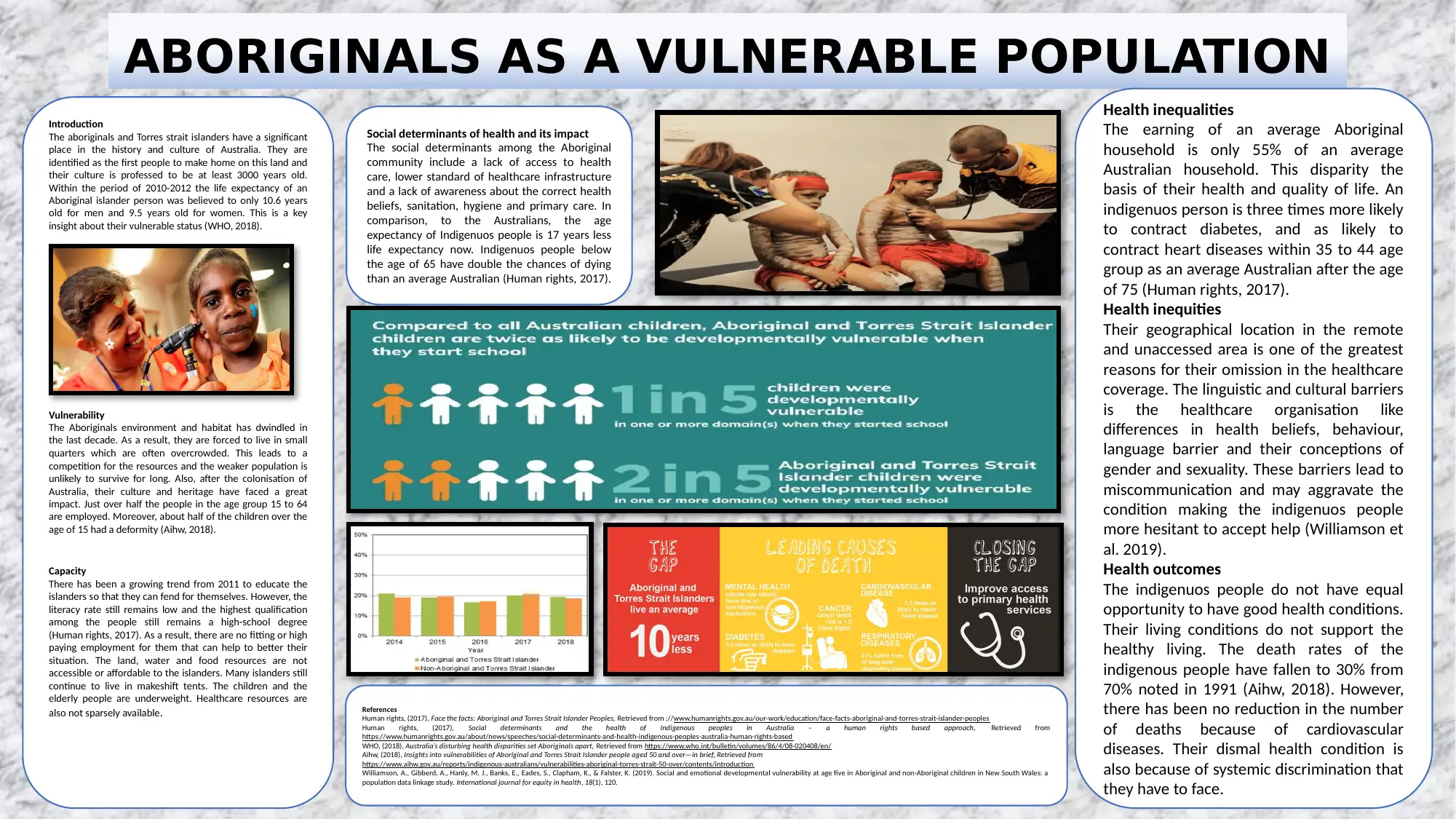Analyzing the Vulnerability of Aboriginal Populations in Australia
VerifiedAdded on 2022/09/21
|1
|807
|37
Essay
AI Summary
This essay examines the health vulnerabilities of Aboriginal Australians, highlighting the impact of social determinants on their well-being. It explores disparities in life expectancy, healthcare access, and living conditions, comparing them to the broader Australian population. The analysis covers factors like inadequate healthcare infrastructure, lack of awareness about health practices, and cultural and linguistic barriers within healthcare systems. The essay discusses the effects of environmental and societal changes, including the impact of colonization, on Aboriginal communities. It also delves into health outcomes, such as increased rates of diabetes, heart disease, and mortality, emphasizing the role of systemic discrimination and geographical isolation in exacerbating these issues. The references provide additional context from organizations like the Human Rights Commission and the WHO.







![[object Object]](/_next/static/media/star-bottom.7253800d.svg)